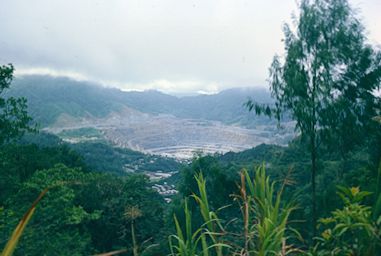 .
. 
The Bougainville copper, gold and silver mine at Panguna on Bougainville Islands, Papua New Guinea, opened in 1972, while PNG was an Australian External Territory, with Rio Tinto as the major owner. While the PNG national government received a 20% share of the profit on independence in 1975, only 1.25% went to the people of Bougainville.
I organized a SPC Regional Training Course in Environmental Protection and Management in Papua New Guinea over seven weeks in January-March 1978 with participants from several Pacific Island countries. We went from Port Moresby (University of PNG) and Motupore Island marine laboratory to the PNG University of Technology in Lae and up to the Wau Ecology Institute before going to Bougainville to visit the Bougainville copper and gold mine in February 1978 as an example of environmental impact of a development activity. We were given a tour of the mine as guests of the mining company, with a briefing on the mine and its impacts, including an extensive brochure with details of their environmental management efforts, including measures of pollutants in mine drainage, the Jaba River and various fish. Levels of copper pollution were compared with other parts of the world, showing that they were much lower than in the Firth of Forth or the Hudson River, for example (without indicating that these were some of the most polluted waters on the planet). Data were provided on levels of copper in fish muscle in tuna and sharks off the coast (which would not spend time in polluted waters). When asked if they had data on copper in fish livers (where it is know to concentrate), they could not provide figures. Asked about the fish in the lagoon at the mouth of the Jaba River that local people eat, they had not done any sampling there. They showed us how they were reforesting the tailings dumps, but a geologist later admitted that the tailings dumps were unstable and would wash down the river anyway. It was an excellent example of "greenwashing" for the trainees. We then met with officials in the regional government who explained how the company had obtained the rights to mine the land with a few cases of beer to the chiefs, and how popular resistance to the mine and its impacts was growing. The pictures will speak for themselves. They include our trainees measuring pollution levels in the Jaba River, which was more like liquid clay.
 .
. 
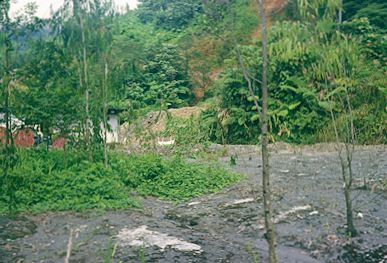 .
. 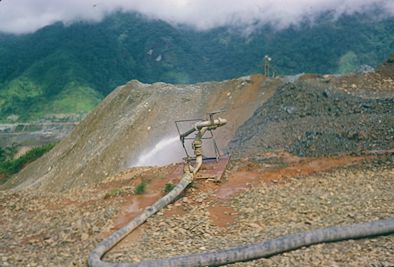
 .
. 
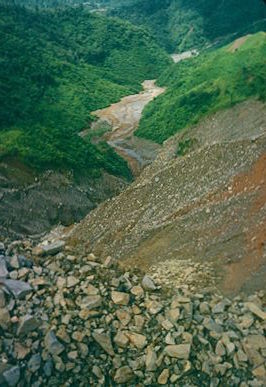 .
. 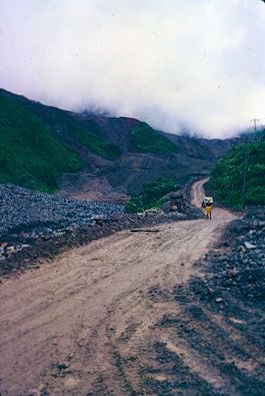
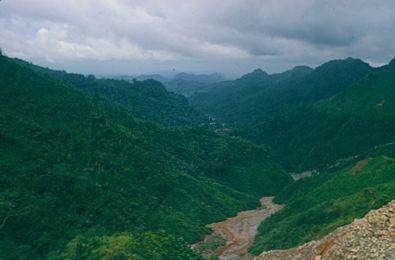 .
. 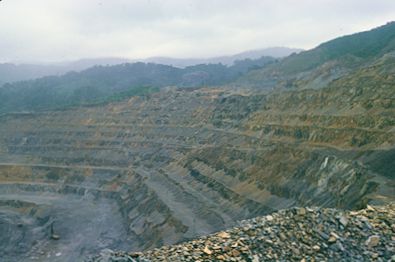
 .
. 
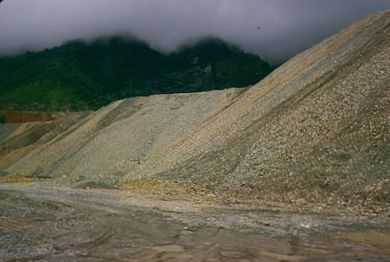 .
. 
 .
. 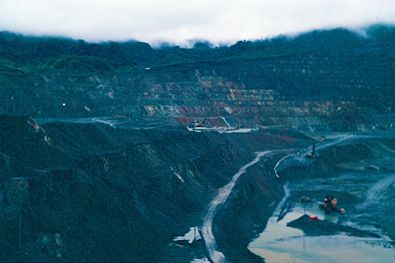
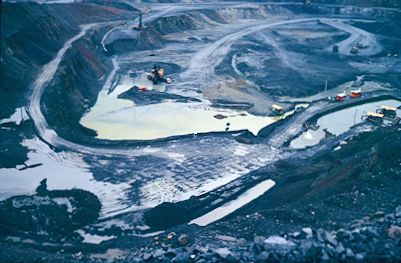 .
. 
 .
. 
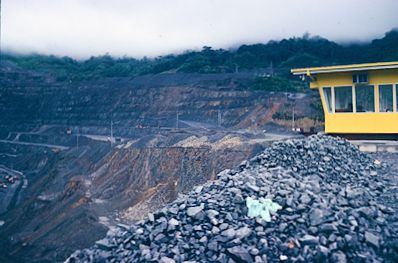 .
. 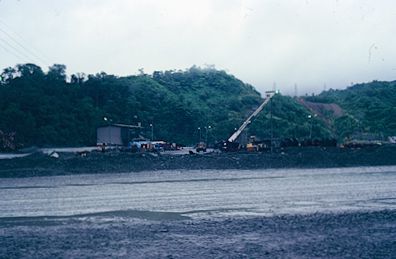
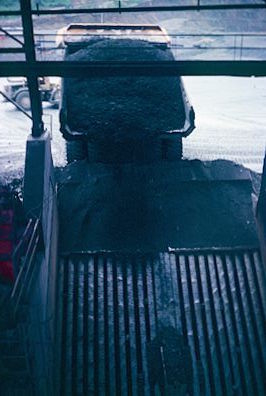 .
. 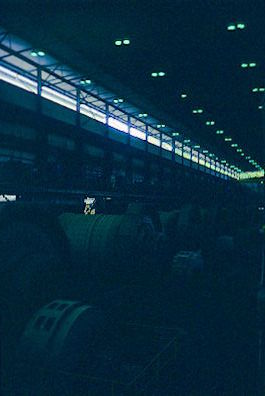
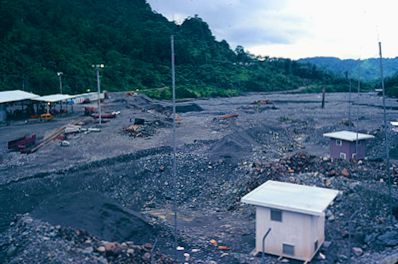 .
. 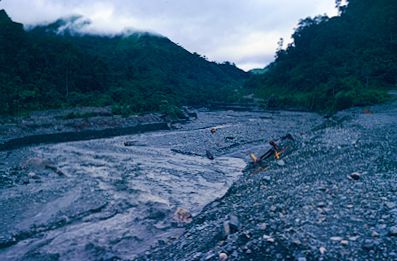
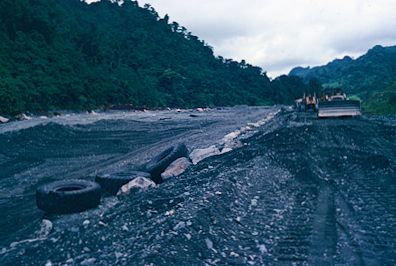 .
. 
The SPC trainees had a first-hand experience of water pollution in the Jaba River.
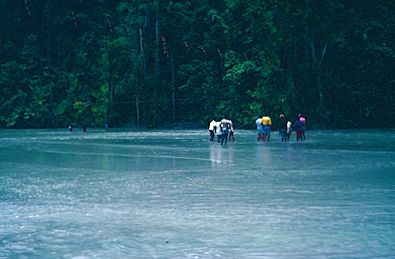 .
. 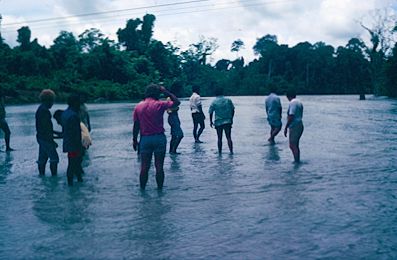
 .
. 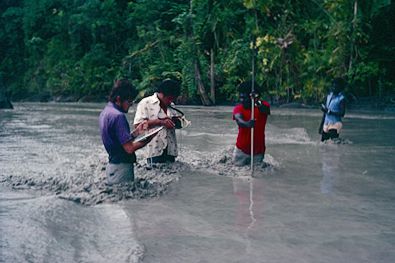
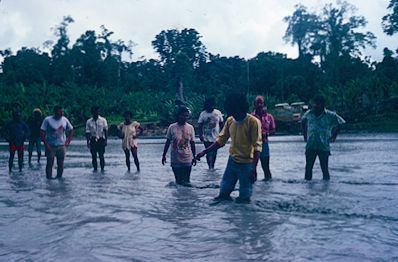
Return to Pacific Islands 1970s page - Return to personal home page
Last updated 12 February 2021
Photographs copyright © Arthur Lyon Dahl 2021